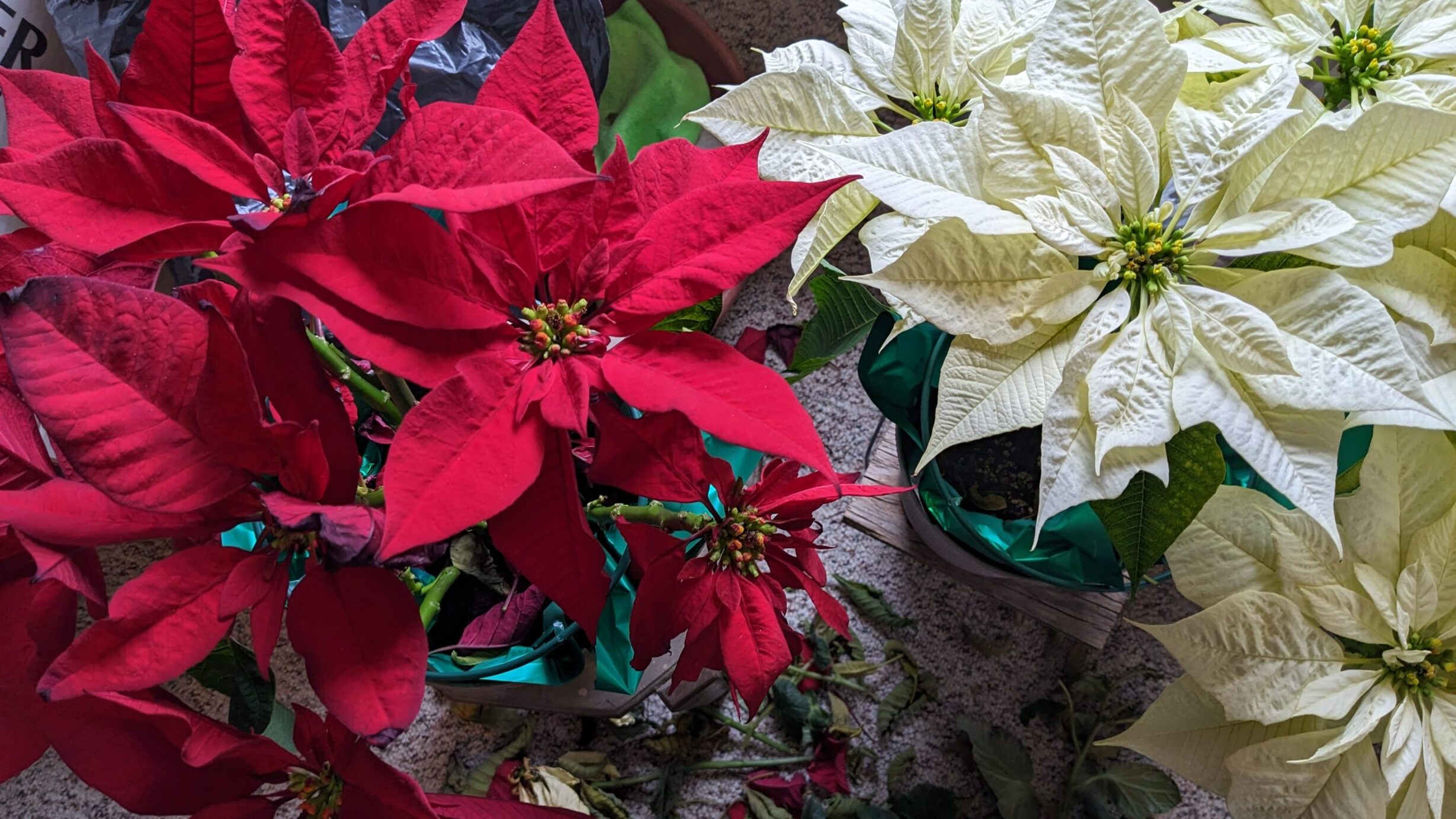
Poinsettia house plant care can be a puzzling story, especially when faced with unexpected challenges, and believe me, they can be more dramatic than a soap opera!
This holiday season, I received two poinsettias as gifts, excited to bring their vibrant colors into my home. However, my experience quickly turned into a mystery as I watched one poinsettia thrive while the other struggled.
Delivered on a frigid -25°C winter evening, these delicate beauties had traveled about 25 miles to reach me; almost like they were returning from an Arctic expedition!
As I began to investigate what went wrong, I quickly learned just how sensitive and fussy these poinsettias can be!
In this blog, please join me as I share my journey through the ups and downs of caring for a poinsettia or multiple poinsettias, exploring the key steps in choosing, caring for, and understanding the unique needs of these festive darlings!
Choosing Your Poinsettia: A Gift of Mystery
When it comes to choosing a poinsettia, I didn’t have the luxury of selection. These poinsettias were delivered as gifts, leaving me with a delightful surprise and a bit of a mystery.
While I usually enjoy picking out the perfect poinsettia, this time I was left to ponder the fate of my green companions, my new poinsettias!
It reminded me of the first time I picked out a poinsettia; I spent hours at the nursery, comparing colors and sizes like a kid in a candy store!
As I unwrapped them, I couldn’t help but wonder if I had received the “star” of the show or the “background character” that would fade away quickly.
Kind of like that one friend who only shows up for the holiday feast and then disappears!
With their vibrant colors and festive spirit, I was hopeful, but I also knew that poinsettias can be as sensitive as a toddler missing their nap time!
Regardless of the lack of choice, it’s essential to check their conditions upon arrival!
If poinsettias are exposed to cold outside temperatures for even a few minutes, they can chill or even freeze, causing the leaves to droop and fall off.
I was concerned about the cold weather, so I let the poinsettias warm up for about 2 hours. This helps the plants acclimatize to their new environment and should lessen the shock.
Don’t worry, they’re not planning a getaway!
Once your poinsettia house plant care journey begins, it’s crucial to take the right steps to ensure they adapt well to their new environment.
As I inspected my poinsettias now that they were home, here are some important factors for you to consider in your poinsettia house plant care:
Inspect the Packaging:
Start by examining the packaging for any signs of damage or stress. This initial check can help you gauge how the poinsettias were handled during transit and whether they might need extra care.
I once ordered begonia bulbs for spring planting, but they arrived dried out. It was a wake-up call to check the packaging immediately!
Unwrap Gently:
I carefully removed the packaging to avoid damaging the delicate leaves and stems. This step is crucial, as poinsettias can easily bruise.
Observe the Condition: Take a Close Look at the Plants
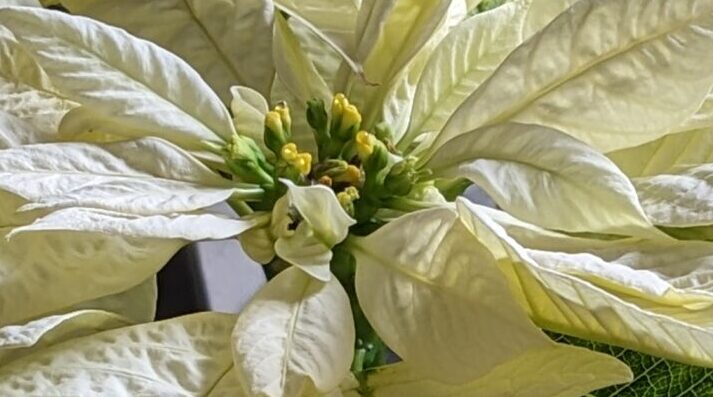
Check the cyathium, which is the central part of the poinsettia flower structure and consists of small flowers surrounded by colorful bracts.
Look for closed flowers, as open flowers will reveal yellow pollen, indicating that the poinsettia is more mature and may not last as long indoors.
Healthy green leaves indicate that the poinsettia is thriving. Yellowing leaves can signal stress or improper care. The colorful leaves, or bracts, should be vibrant and firm.
Drooping or discolored bracts can suggest issues with watering or temperature.
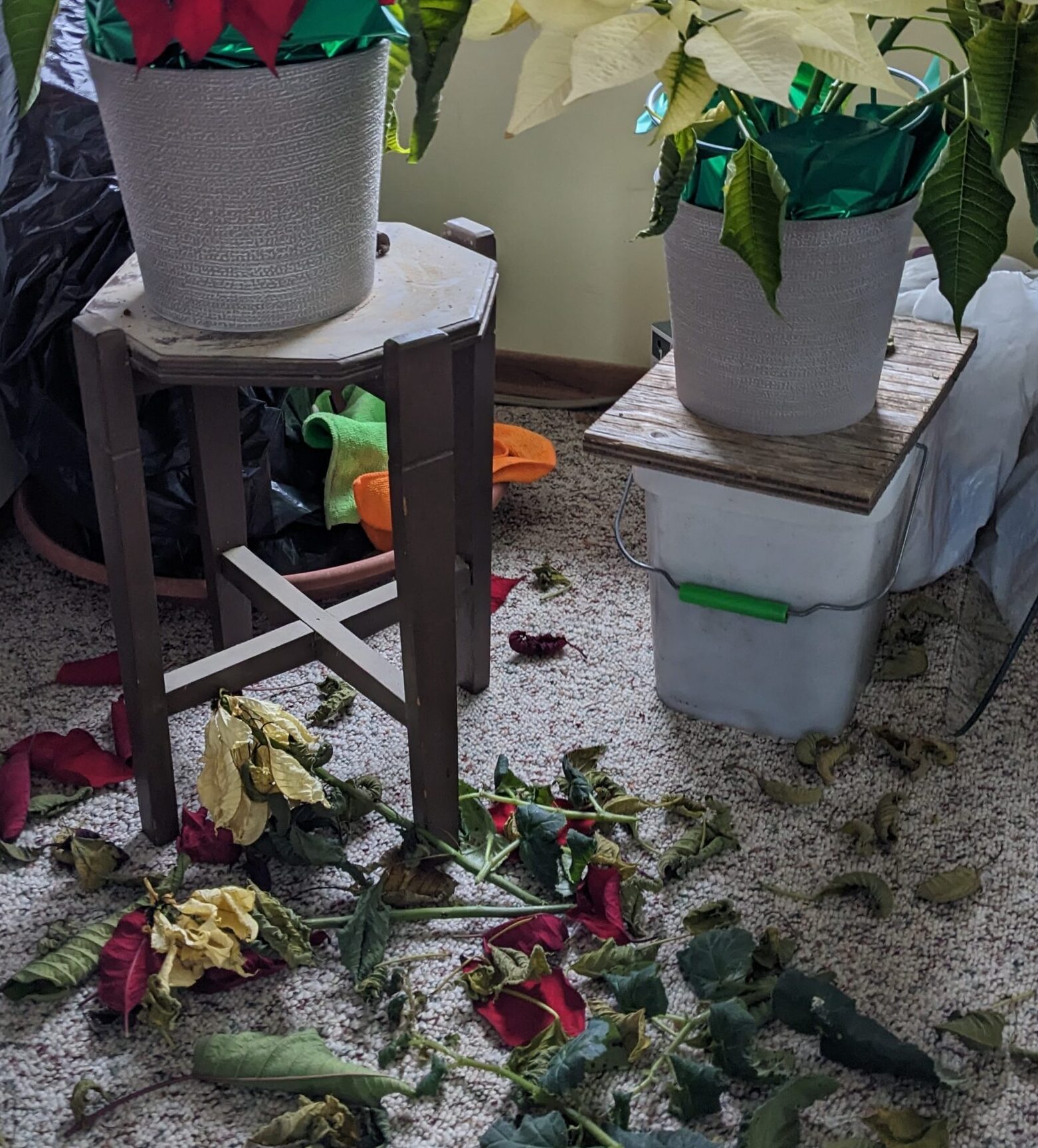
Unfortunately, it wasn’t until the next day that I discovered the cold temperatures and handling had damaged three sections of the red poinsettia and one section of the white poinsettia, leading to noticeable leaf drop for both.
The leaves were starting to droop, highlighting the sensitivity of these festive plants to their environment.
Each of these aspects is important for assessing the overall health of your poinsettia and for catching any potential problems early on.
Check for Drainage:
Ensure that the pots have adequate drainage holes. Poinsettias do not like to sit in water, and proper drainage is essential to prevent root rot.
As you can see in the images above, the pots for both poinsettias did not have drainage holes. This lack of drainage can contribute to excess moisture buildup, which may further stress the plants and lead to issues like leaf drop.
Water Appropriately:
Feel the soil to determine if it needs watering. If the top inch is dry, give it a light watering. Be cautious, as overwatering can be just as harmful as underwatering.
I learned the hard way about overwatering when I lost my first houseplant to root rot. It was a tough lesson, but now I’m much more careful!
Find an Ideal Location:
Position your poinsettias in a spot with bright, indirect sunlight. This is important because too much direct sunlight can scorch the leaves, while too little light can hinder their growth.
Monitor for Changes:
Keep a close eye on your poinsettias over the next few days. Monitoring allows you to catch any changes early, whether they’re positive or negative.
By considering these factors when your poinsettias arrive, you can help ensure they thrive in their new home, despite their fussy nature.
A little attention can go a long way in keeping your festive poinsettias healthy and vibrant!
Top Challenges Caring For Poinsettias
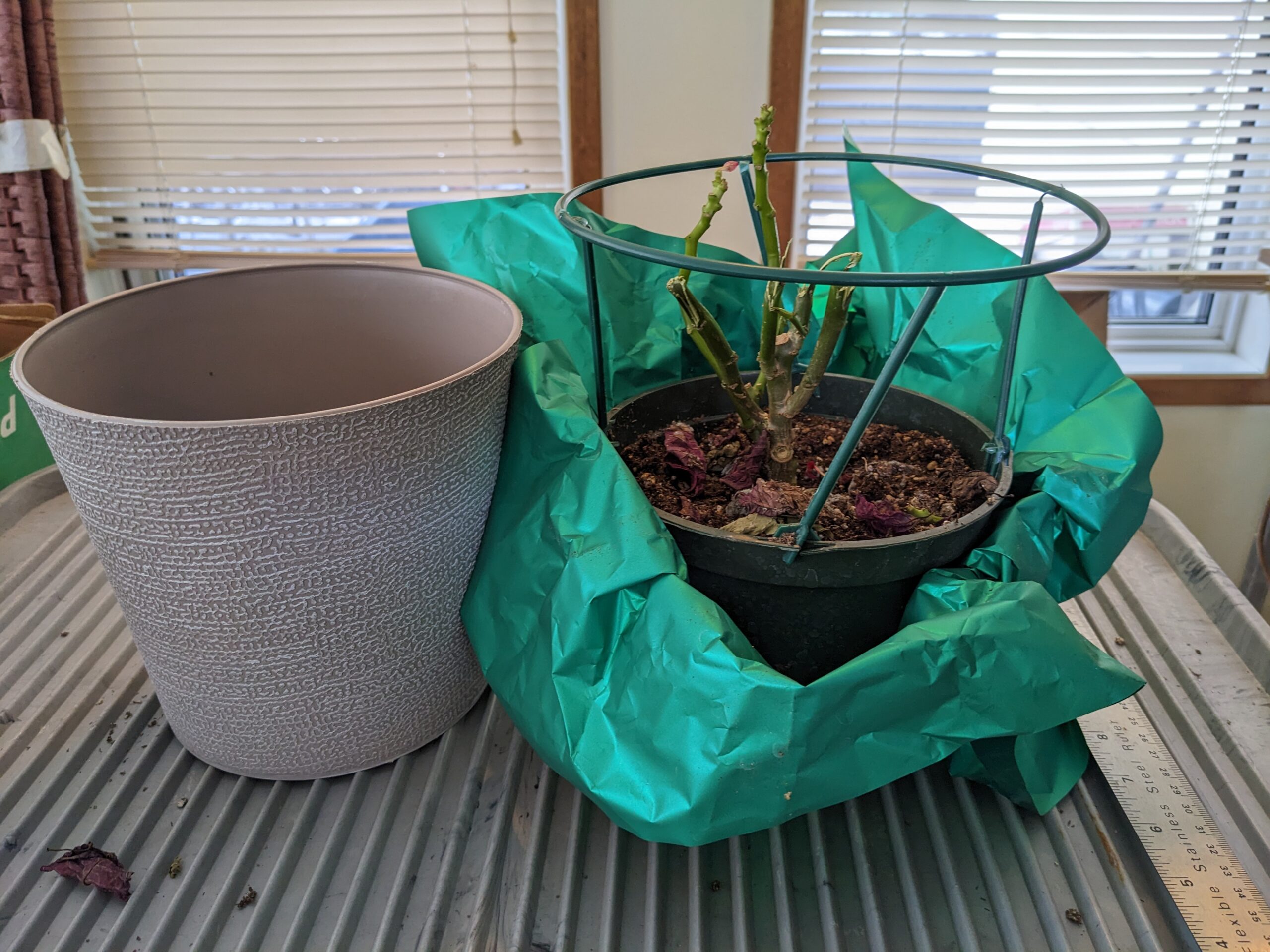
Poinsettia house plant care can be a rewarding yet challenging experience. Here are some key considerations to keep in mind:
Light Requirements:
Poinsettias thrive in bright, indirect sunlight. Too much direct sunlight can scorch their leaves, while too little light can hinder their growth. Finding the right balance is essential for healthy plants.
Think of it as finding the perfect spot for a sunbather who doesn’t want to risk a sunburn!
Watering Wisely:
Poinsettias like their soil to be kept moist but not soggy. It’s important to check the top inch of soil; if it’s dry, it’s time to water. Be cautious, as overwatering can lead to root rot.
Remember, they don’t want to swim; they just want a nice drink!
Temperature and Humidity:
Poinsettias prefer temperatures between 65°F and 75°F (18°C to 24°C) during the day and slightly cooler at night. They also enjoy higher humidity, so consider misting them or placing a humidifier nearby, especially in dry winter months.
Think of it as giving them a little spa treatment; who wouldn’t enjoy that?
Seasonal Nature:
Poinsettias are often associated with the holiday season, but their care doesn’t stop once the festivities are over. Understanding their seasonal needs can help you keep them healthy throughout the year.
Just because the party’s over doesn’t mean they want to be left in the corner!
Living in Canada:
For those living in colder climates like Canada, it’s crucial to protect your poinsettias from cold drafts off of windows and sudden temperature changes. Bringing them indoors promptly after exposure to cold can help maintain their health.
After all, no one wants their poinsettias to experience frostbite!
Blooming and Post-Holiday Care:
After the holiday season, you may notice your poinsettias starting to lose their leaves, which is a natural process. To encourage reblooming, continue proper care, including pruning and adjusting their light exposure.
Poinsettias require about 14 hours of darkness each day for several weeks to initiate blooming again, which can be challenging in a typical home environment.
While it’s possible to keep them alive longer, the effort to encourage reblooming can be daunting.
One year, I tried to keep my poinsettia alive after the holidays, but despite my efforts, it didn’t rebloom.
If you prefer a hassle-free experience, consider purchasing new poinsettias for the next holiday season instead of trying to revive an old one.
After all, not everyone enjoys the thrill of caring for a high-maintenance poinesttia!
Poinsettia Origins
Native Habitat:
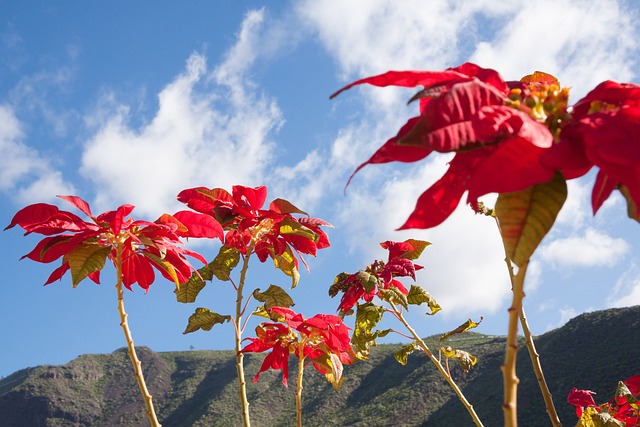
Poinsettias are native to Mexico, thriving in warm, dry climates typical of tropical and subtropical regions. In their natural habitat, they can grow quite large, reaching heights of up to 10 feet.
They also flourish in well-drained, sandy soils found in open fields and along hillsides.
The vibrant red, pink, or white bracts attract pollinators like butterflies and bees, playing a vital role in their reproduction.
During winter, poinsettias enter a dormancy period triggered by shorter daylight hours, allowing them to conserve energy for the next growing season.
Understanding their native habitat helps us provide the right care when growing them indoors.
Light and Soil Needs:
Poinsettias thrive in bright sunlight, as they are native to tropical regions where they receive ample natural light. Ideally, they should be placed in a spot that gets at least six hours of indirect sunlight each day.
However, it’s important to avoid direct sunlight, as it can scorch their leaves and lead to stress.
In terms of soil, poinsettias prefer well-drained potting mixes that allow for good airflow to the roots.
A mix designed for tropical plants or a combination of potting soil with perlite or sand works well to ensure proper drainage.
Overly compacted or waterlogged soil can lead to root rot, so it’s crucial to monitor moisture levels and ensure the pots have adequate drainage holes.
Poinsettia Facts
Sensitivity:
Understanding their origins helps explain why poinsettias can be so sensitive and fussy when grown as houseplants. Despite their festive appearance, they are not fond of cold drafts or overwatering; both of which can be detrimental to their health.
Just like a celebrity at a red carpet event, they require specific conditions to thrive and can react dramatically to environmental changes!
Seasonal Decorations:
Typically, poinsettias are treated as seasonal decorations, lasting around 6 to 8 weeks with proper care. After the holiday season, many people find that their poinsettias begin to decline, which can be disheartening.
Poinsettia Lifespan
Reblooming Challenges:
While it’s possible to keep them alive longer, the effort required to encourage them to bloom again can be daunting. Poinsettias need a period of darkness for about 14 hours a day for several weeks to rebloom, which can be challenging in a typical home environment.
Care Expectations:
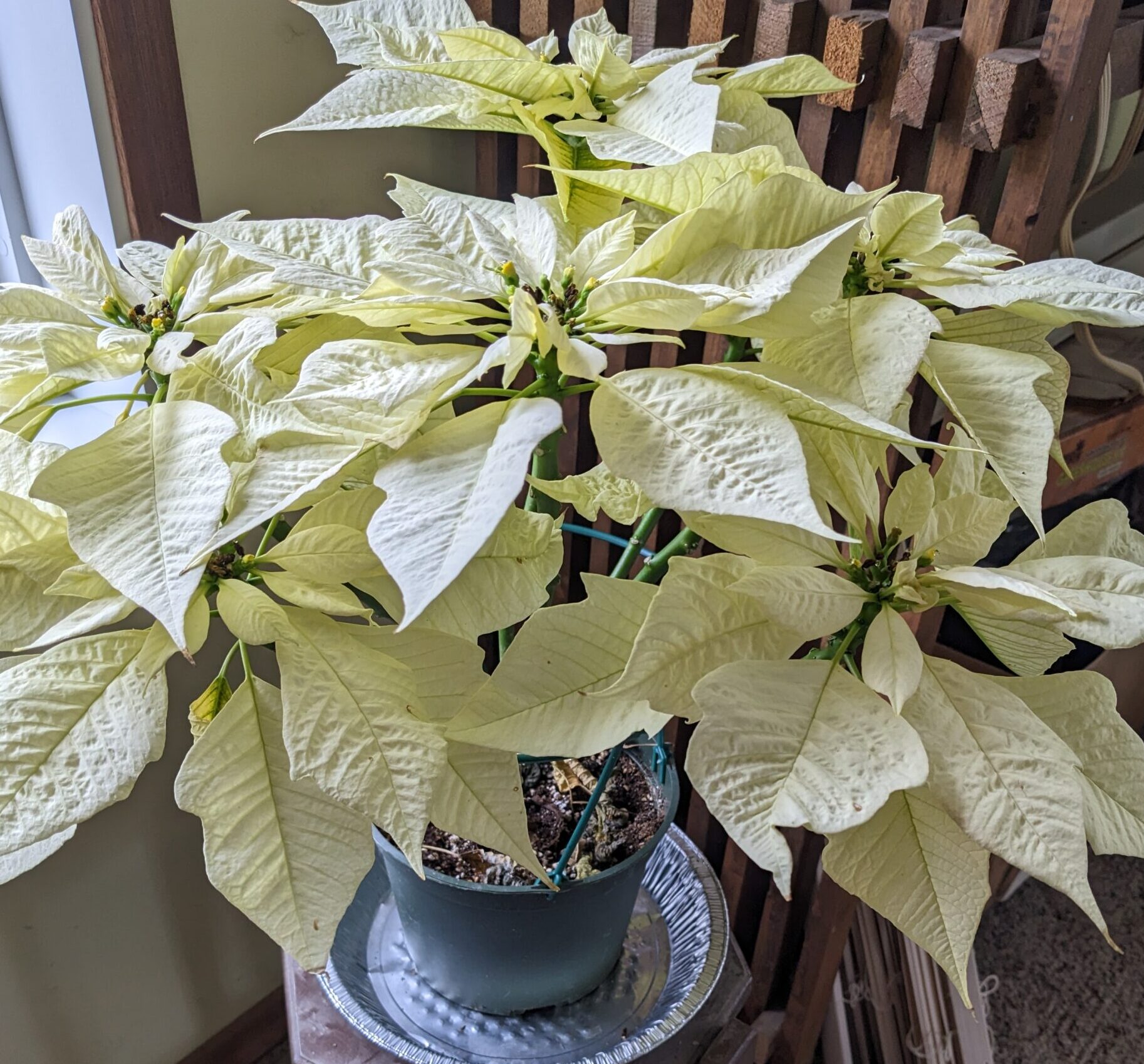
If you choose to keep your poinsettia after the holidays, be prepared for a bit of a journey. With the right care, it may survive, but its chances of blooming again are uncertain.
For instance, my white poinsettia, which I removed from its colorful plastic wrap about three weeks ago, is thriving in the original pot with a foil pie pan that collects runoff water.
After some trial and error with her location in my sunroom, she’s now in the perfect spot, showing minimal leaf drop and only a few dying yellow flowers.
I’m confident she’ll be around for at least another two weeks!
By understanding the origins and lifespan of poinsettias, you can make informed decisions about their care and manage your expectations regarding their longevity!
So, whether you choose to nurture them through their ups and downs or enjoy them as a temporary festive decoration, you’ll be well-equipped to handle whatever these high-maintenance divas throw your way!
Conclusion:
Caring for poinsettias can be both a joy and an unpredictable journey. From the moment they arrive at your home to their post-holiday care, these charming belles require attention and understanding to thrive.
By being mindful of their light requirements, watering needs, temperature preferences, and seasonal nature, you can create an environment where your poinsettias flourish.
Living in a colder climate like Canada adds an extra layer of consideration to your poinsettia house plant care routine, but with the right precautions, your poinsettias can remain healthy and beautiful throughout the winter months.
Remember that these festive poinsettias may lose their leaves after the holidays, but with proper care, they can rebloom and continue to bring joy to your space!
Ultimately, the key to successfully caring for poinsettias lies in observation and adaptability.
Each poinsettia is unique, and by tuning into their specific needs, you can enjoy their striking colors and lush foliage long after the holiday season has passed.
Embrace the experience, learn from your challenges; like my own journey with a poinsettia that didn’t make it!
Let your poinsettia house plant care be a source of beauty and cheer in your home year-round!
Thank you for joining me on this journey through the world of poinsettias!
Have you ever cared for a poinsettia?
What challenges did you face, and what tips do you have for fellow indoor gardeners?
Share your experiences in the comments below!
Let’s keep the conversation going and support each other in creating thriving indoor gardens!
Until next time – Happy Indoor Gardening!
Take care
Barb
